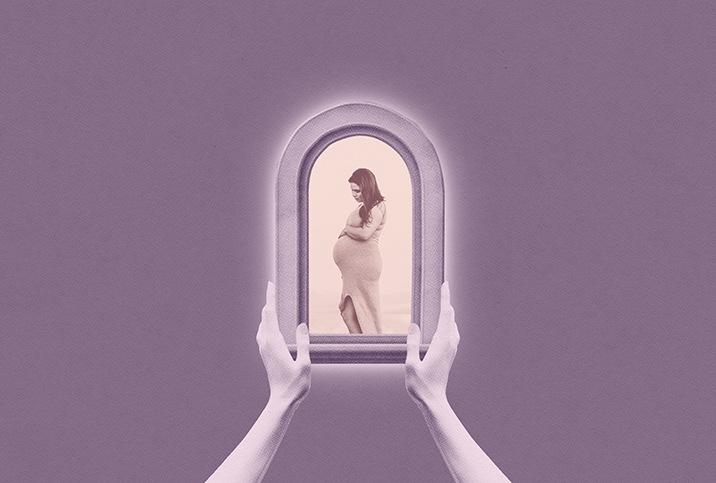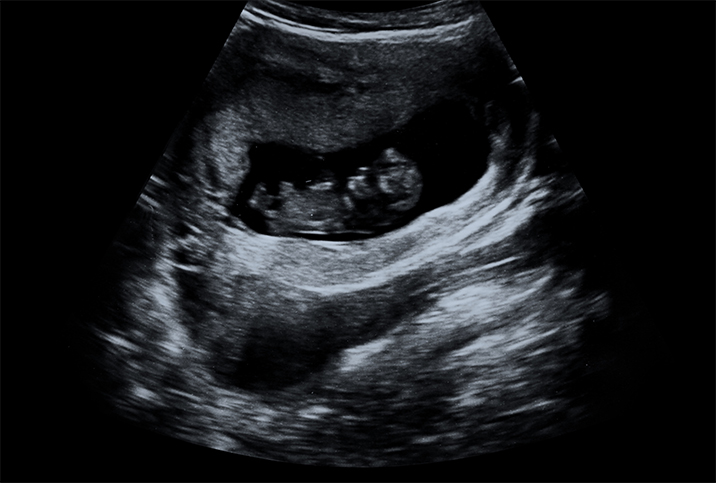Your Miscarriage Could Be Due to a Molar Pregnancy

It's sad to realize that not all pregnancies can be carried to term, and even sadder to experience this loss yourself. The initial euphoria of finding out you're pregnant is suddenly replaced by fear, dread and grief.
A variety of factors out of the pregnant person's control can cause miscarriage, including chromosomal abnormalities, viral or bacterial infection and environmental pollutants. One factor that causes miscarriage but is not widely discussed due to its rareness is a molar pregnancy.
What is a molar pregnancy?
A molar pregnancy is a condition where there are issues affecting a zygote or fertilized egg. As a result of these issues, the fetus and its placenta do not develop normally following conception.
This complication occurs in approximately 50 to 100 per 10,000 pregnancies (0.005 percent to 0.01 percent), according to a 2019 case report published in the Journal of Medical Case Reports.
Medically, the condition is referred to as a hydatidiform mole and is considered a complication of pregnancy. Trophoblasts, the cells that develop into the placenta during a normal pregnancy, grow and multiply at an alarming rate. Molar pregnancies are prone to numerous complications, including a rare form of cancer, and require immediate treatment.
These pregnancies can be complete or partial.
"A complete molar pregnancy has swollen, cystic-like placental tissue and an embryo is not seen. A partial molar pregnancy can have both normal and abnormal placental tissue, along with a fetus that is not expected to survive after delivery due to chromosomal abnormalities," explained Sasha Andrews, M.D., a maternal-fetal medicine specialist in Colorado.
Risk factors for molar pregnancy
It's important to remember molar pregnancies occur by chance and are not the fault of either parent.
Some women are at a higher risk for molar pregnancies, though, and it's important to be aware of those risk factors. The women at the highest risk are those who have had previous molar pregnancies. The next highest risk group is women at the oldest and youngest ends of the age spectrum when pregnant, explained Sarah Yamaguchi, M.D., an OB-GYN in Los Angeles.
Existing studies verify this observation. Pregnancies in women at the extremes in maternal age, meaning younger than 15 or older than 45, are more vulnerable to developing a molar pregnancy. Adolescents are seven times likelier to develop a complete hydatidiform mole, while women 45 and older have nearly twice the likelihood of developing one, according to a 2016 study published in the medical journal Gynecologic Oncology.
Ethnicity is also a risk factor. Another 2016 study published in Gynecologic Oncology suggested that Asian women or those of Asian descent are most vulnerable to complete molar pregnancies compared with other races/ethnicities.
Additionally, women who have previously suffered miscarriages, particularly those caused by previously undiagnosed molar pregnancies, run the risk of recurrence, according to a 2015 study published in Human Reproduction.
Molar pregnancy symptoms
The challenge with molar pregnancies is that the symptoms are initially the same as those of a healthy pregnancy. However, toward the end of the first trimester, expectant women may encounter the following symptoms that indicate a problem:
- Bleeding ranging from dark-brown discharge to bright-red blood
- Severe nausea with or without vomiting
- Occasional passage of grape-like cysts from the vagina
- Pressure or pain within the pelvic region
Bleeding caused by a molar pregnancy may result in several complications. Andrews shared her experiences handling molar pregnancies: "Our practice has cared for patients who have had a twin pregnancy with one live fetus and a molar pregnancy in the other amniotic sac. These pregnancies are very complicated, with risks to both the mother and fetus. In one case, the mother suffered severe preeclampsia [pregnancy-induced hypertension], another with life-threatening bleeding and preterm delivery."
Is a molar pregnancy a medical emergency?
Yes, a molar pregnancy is a medical emergency. Given how much blood an expectant woman stands to lose during the course of a molar pregnancy, as well as any complications adversely affecting her health, she needs to seek immediate medical care.
The United KIngdom's National Health Service (NHS) advises pregnant women to immediately call a midwife or physician or head directly to a hospital emergency room in the event of the following:
- Sudden heavy bleeding or seeing a brown discharge from the vagina
- Increasingly severe morning sickness (hyperemesis gravidarum) along with the inability to keep both food and fluids down
- The baby bump looks far too large for the current stage of pregnancy, particularly during the first trimester
- Symptoms such as feeling faint (anemic), hypertension, severe anxiety, darker urine or pelvic pain
Diagnosing a molar pregnancy
For the most part, molar pregnancies aren't discovered until a woman miscarries. But for those who manage to get medical assistance sooner, the following diagnostic procedures are carried out:
- A thorough checkup with a gynecologist or, whenever available, at an early pregnancy assessment unit at a hospital
- A series of blood tests to check the level of the pregnancy hormone human chorionic gonadotropin (hCG), which is significantly higher in women going through molar pregnancies
- Blood tests to see if the mother may have an underlying thyroid or other endocrine condition that may affect the pregnancy
- An ultrasound
Treating molar pregnancy
Unfortunately, there is no way to prevent molar pregnancy, Andrews said. Patients who have this type of pregnancy should complete the recommended treatment and monitoring, and avoid another pregnancy for at least a year to decrease the risk of recurrence.
In most cases, a molar pregnancy terminates in a miscarriage and is usually treated in the same manner as other miscarriages. However, when a molar pregnancy is detected early, the surgical termination of the pregnancy is mandated to prevent any adverse effects on the patient's health. This procedure may be done under general anesthesia but also may be induced using certain medications.
Aftercare is important, specifically, monitoring the levels of hCG and thyroid hormones in the bloodstream. If the level of hCG remains high following the termination of the pregnancy, further treatment may be mandated by the attending gynecologist.
Still, early detection can prevent serious complications from developing. Yamaguchi stressed the importance of women knowing their bodies.
"Women usually come early in their pregnancy to see me because of bleeding or something else that doesn't feel right, and I do an ultrasound and see what I suspect is a molar pregnancy," she said.
In conclusion
Molar pregnancies are rare but need to be treated immediately when they do occur. Always consult your medical provider when you sense something is wrong during your pregnancy. If you are receiving routine medical care, a molar pregnancy can be detected and treated faster, reducing the risk of further complications.


















